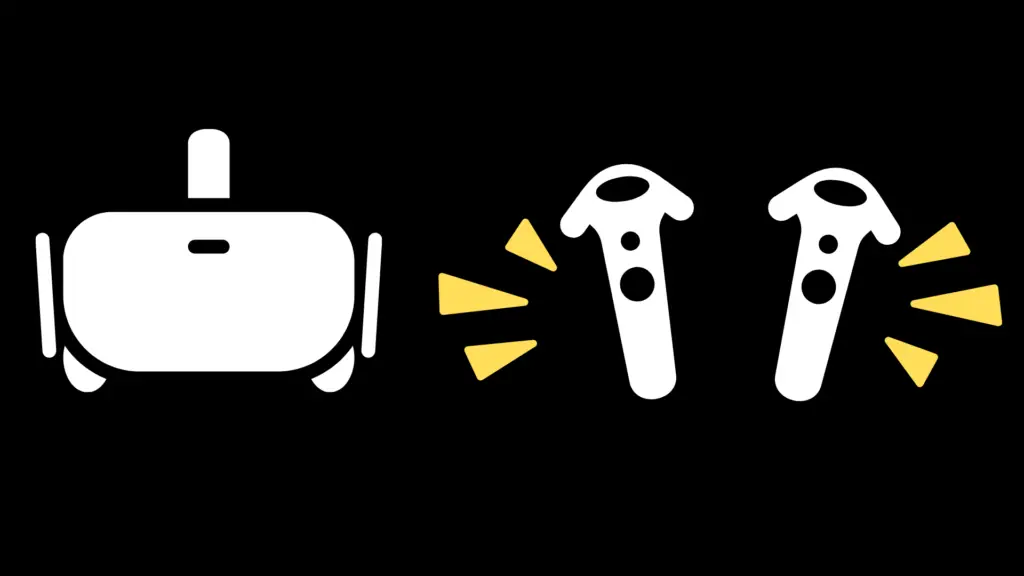Why is My Oculus Controller Buzzing?

While there are some things you can use on your Oculus headsets that don’t require additional controllers, the two controllers Oculus devices come with are typically quite important to virtually every aspect of the experience. They enhance a lot of the experience, but as such, if they’re not working as you understand they should, this could be quite frustrating. One question that comes up with Oculus users from time to time is why their Oculus controller is buzzing.
One of the key features of the Oculus controllers is haptic feedback, also known as rumble, or “buzzing.” There are a variety of reasons why your controller may be buzzing, but if the buzz is lasting longer than it should (possibly indefinitely). One of the most common and simplest fixes for this issue is to replace the batteries, or to disconnect and reconnect the controllers from the Oculus headset itself.
There are a variety of things that cause your Oculus controller to buzz (indefinitely or otherwise), as well as several potential fixes to consider.
Why is My Oculus Controller Buzzing?
There are a lot of different functions in Oculus devices that may cause your controller to vibrate. It is a common gimmick used in many video games and apps, with the idea being that the vibration makes you feel like you are being immersed in the experience. Think of it like a smaller-scale version of the Universal Studios Back to the Future ride, that has moving chairs and large-scale vibration.
Sometimes, it may be an issue that one or both of your Oculus controllers are buzzing in a way that is not normal. One explanation for why this happens is actually to do with your battery shaking with the vibration. However, the problem may be much more serious, and would thus require you to have the issue addressed by Oculus themselves via a repair or replacement of the affected controller(s).
What causes the Oculus controller to buzz indefinitely
While haptic feedback is a basic function of the device, it is usually very easy to tell when the buzzing has gone on for too long. Sometimes, the buzzing may seem long, but stops eventually, or it may go on until the controllers are off or the batteries die. It may also be an issue of only one controller, or both may be dealing with this headache.
How to stop my Oculus controller buzzing
It is possible that the controller is buzzing due to using a game or app that, intentionally or unintentionally, isn’t stopping triggering the vibration function. If this is the case, you should be able to close the game or app, and find that neither of the two controllers are buzzing anymore. If this does not work, try turning your Oculus headset off and on.
If even that doesn’t help, a valid option to take is to replace the batteries and reset the connection between your headset and the controllers. You can go even further and completely unpair the controllers via the Oculus app on your phone. While this is a bit of an extra step, it is not at all a complicated process to get them paired back up again.
What to do if everything has failed to stop my Oculus controller buzzing
If, despite everything you have tried thus far, the controllers don’t seem to stop vibrating, the next solution you have is to contact Oculus in order to get things figured out. There may be a solution they can provide, or if no solutions are available, you can send it in for a repair (so long as they are defective and under warranty). If they are not under warranty or your warranty only covers defects, you may have to pay to have them replaced or repaired.
An option to consider is to simply turn the rumble feature down to the lowest setting in Settings / Device / Hands and Controllers; while this does not turn it off, it makes it incredibly weak. This may be disappointing in situations where you want to feel the vibration while playing games, it is better than having it rumble all the time. If you can’t live with this, however, you may want to look into repairing or replacing them.
If you do wind up getting them repaired or replaced, regardless of whether they are under warranty, you will need to send them in to Oculus, which can take a fair bit of time. Thus, you should be mindful that there is no other way to fix the issue, as otherwise, you may be out Oculus controllers for however long it takes them to be repaired. You may also consider a local repair place if available, but be careful that you don’t choose a bad one.
Why has my Oculus controller stopped buzzing altogether?
Conversely, plenty of people deal with issues of their Oculus controllers stopping their vibration altogether. The issue may be that the vibration only seems off, but is turned to the lowest setting, which is incredibly soft. Try turning the vibration strength higher until you find a level of strength that is acceptable for you.
Much like with a vibration that won’t stop, Oculus recommends removing the batteries to reset the link between the controllers and the Oculus headset. You may also need to reset your headset in order for the controllers’ vibration function to resume working. Finally, unpairing and then repairing the controllers using the Oculus app is a solid last resort to fixing the problem.
If none of this works, you may want to contact Oculus support, depending on how important it is that you have vibration functionality. If you don’t have a warranty anymore, or it was your fault that the damage occurred in the first place (and you don’t have a warranty that covers accidental damage), you will have to pay the cost to have them repaired or replaced. If you can live without vibration, so long as that’s the only issue with the controllers, you could be justified in leaving them alone (but do so only at your own risk).
Do all Oculus controllers work with all Oculus headsets?
If you have two Oculus devices, such as the Oculus Rift, Oculus Quest 1 and/or 2, or Oculus Go, you may be wondering if you could just use controllers from the other consoles in lieu of the malfunctioning controllers (either indefinitely or until the repair process is complete). Unfortunately, compatibility between these consoles is not great.
All five of the above-mentioned Oculus platforms use a different type of controller, with only the Oculus Quests 1 and 2 having a particularly similar setup. However, even those are not compatible with each other’s controllers, as slight design changes with the Oculus Quest 2’s controller prevent this.
Do Oculus controllers tend to break or have defects?
Controllers of all kinds have similar issues they struggle with; for example, many have problems with stick drift, where the control stick is putting in inputs despite not being touched. This is a problem that you can find on Nintendo Switch, Steam Deck, and Oculus controllers, to varying degrees of severity.
One issue that Oculus Quest controllers face is that they are not quite as durable as other controllers on the market. Thus, you need to take exemplary care that no harm should befall them. One thing that you should work to avoid is banging them on any walls (or people!) while in use, as this could harm the controllers if it hits hard enough.
Damage to the controller can result in a number of different issues, including poor motion detection, stick drift, and of course, issues with vibration not stopping or not starting.
Is it possible to get third-party replacements for your Oculus controller?
If you feel like Oculus’ controllers are not hardy enough, or tend to have the same problems over and over, or even if you want to try something new, you may be curious about using third-party controllers. This, in theory, could serve as a decent alternative to sending in your Oculus controllers for repair or replacement, but could also be used to tide you over until the official controllers were returned to you by Oculus. Unfortunately, possible controller alternatives on Oculus are not exactly robust.
While it is possible to connect a third-party controller to your Oculus Quest 2, these controllers are not ones that reproduce the effect of the controllers that came with the platform. Instead, they are traditional Game Pads (Xbox controller, and DualShock 4/5 controllers, for example), or you can go even further and connect a mouse and keyboard to your Oculus device (so long as the devices you want to connect have wireless capability). While this will not allow you to play a motion-based game, you can still use them to play more traditional games on the service, as well as navigate the menus more easily.





